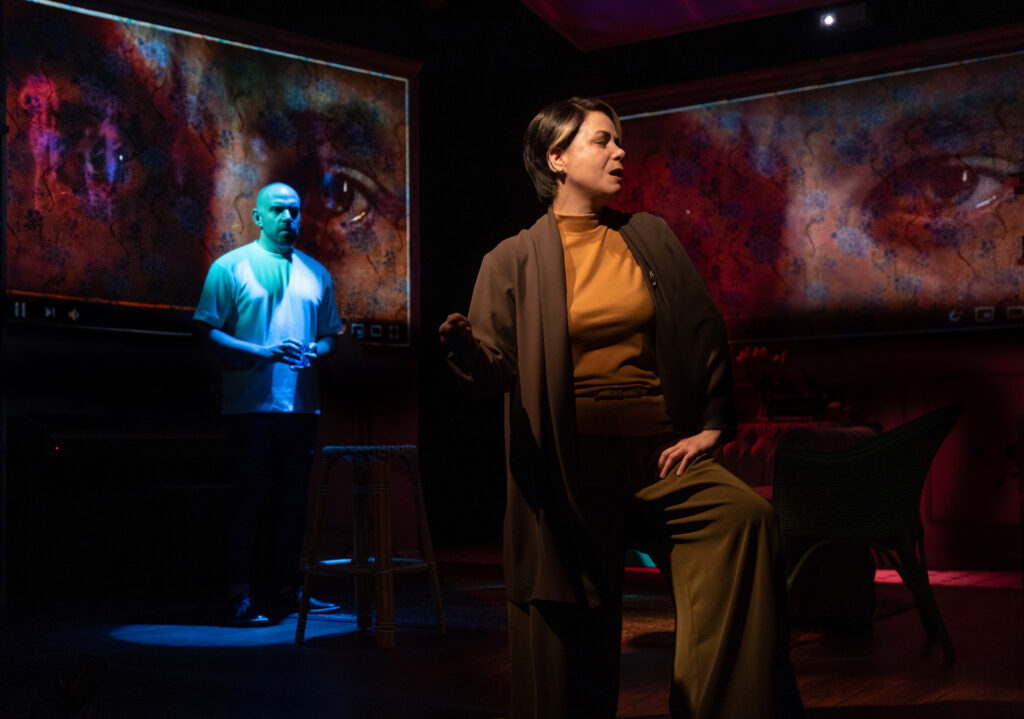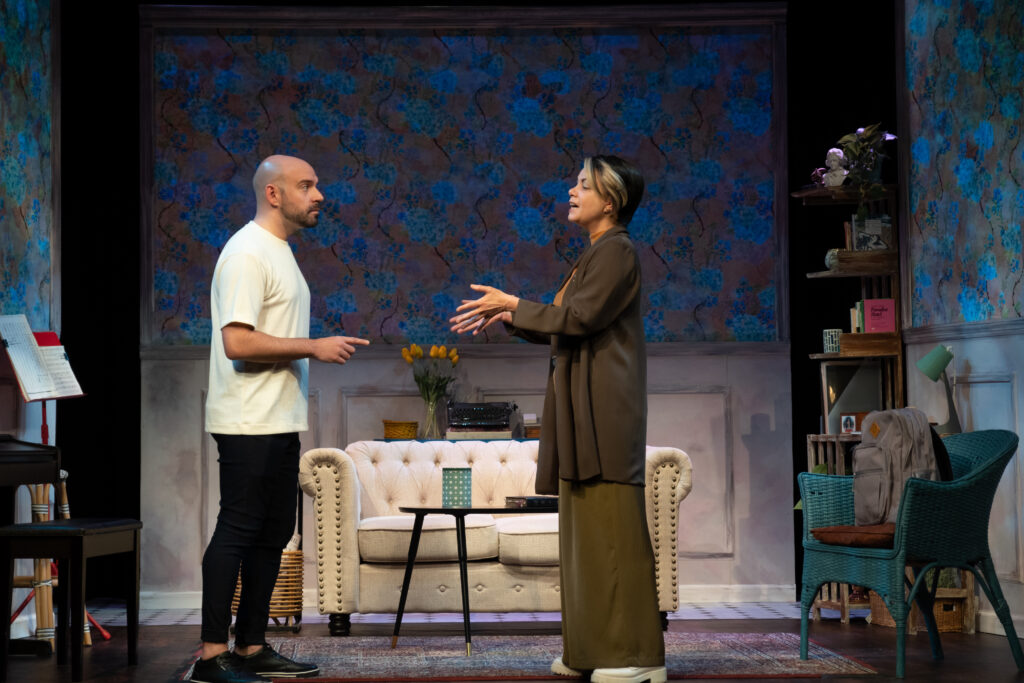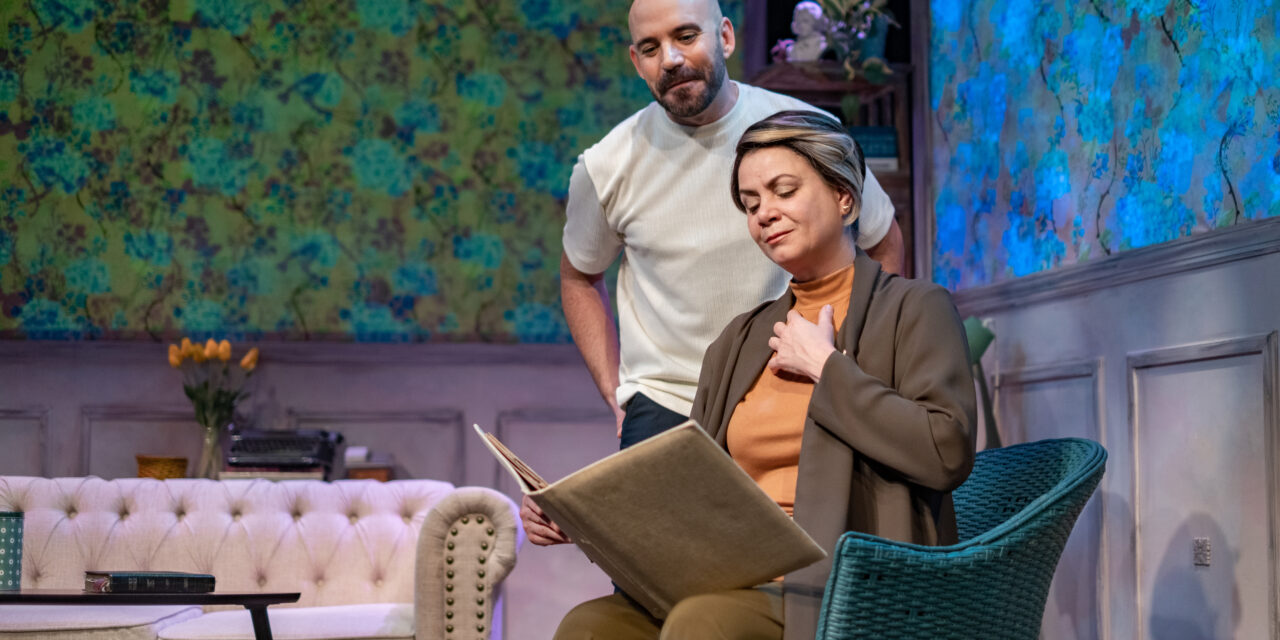By Marcina Zaccaria . . .
Inside the home of a music teacher named Amelia, Ramón discusses the problem of the swallow, a bird that is like a pigeon, sounding in crisis.
Ramón, played by Rafa Sánchez, attempts to find his breath. With little inhale and almost no exhale, he fails to reveal the depth of his emotion and the memory that might be trapped, away from his cognition. Appearing almost immature, he is unable to grasp the larger truths. With the emotional memory within his body, he seeks to trust Amelia, the portrait of a strong mother, with a strong religious background. Dressed in orange and green, playing a piano, her classic appearance hides deeper pathways that she seeks to uncover.

When emotions are beyond our comprehension, the truth must be dished out slowly. This two-character drama continues, and we learn about the interior life of Amelia, delicately portrayed by Zulema Clares. A woman over 60, she pines for her lost relatives. Speaking of the accidents that can take one’s life, Amelia reaches for her pictures, effortlessly explaining that the loss of family is her greatest grief.
Eventually in this classic and well-constructed home, a shelter is made for creativity and understanding. Completely in Spanish, with the option of English translation, La Golondrina by Guillem Clua, is a beautiful story about how support arrives in sometimes the most surprising ways. Explosive arguments about who makes the street are some of the most exciting questions built into a larger drama about how we connect.
It can be a violent world. Ramón, dressed in black and white, speaks with an insistence that follows an ingrained pattern of deep belief. He explains that, when running the streets, people can disappear within themselves and then reappear with greater understanding. He mentions this with every bit of reliance on the years that he has put himself through. Unafraid to speak of those out loud and proud, he carries messages, past the terrorist circumstance driving the play.


Glorious scenes in this production, directed by Ismanuel Rodríguez, rely on dizzying motion effects in the world of the nightclub, far, far away. The turquoise, orange, and yellow backdrops dissolve to a video sequence of dance in the background. The imagery never overtakes the expressive acting, carefully found moment by moment by both performers.
The last third of the play features shocking revelations. These twists of plot keep the audience attuned to the drama, seeking something greater. In the end, Ramón is able to sing the song of the swallow who soars through the sky. His voice is finally free, like a butterfly that can no longer be captured. Singing for others as well as for himself, his message is a victory, conquering sadness held after such a long journey.
La Golondrina or The Swallow is playing at Repertorio Español, located at 138 East 27th Street in New York City. www.repertorio.org
Photos: Michael Palma Mir


















